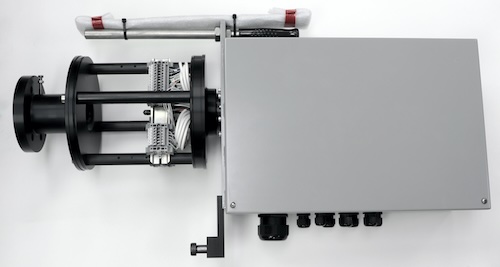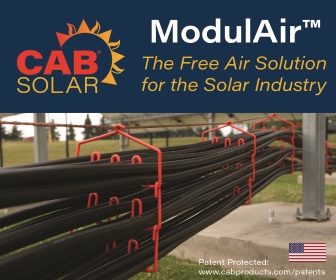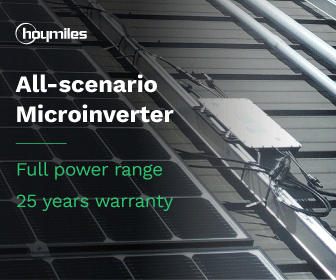Newly Integrated Moog Technology Boosts Reliability for GE Wind Turbines
To improve reliability and reduce maintenance costs for wind farm managers, Moog has newly integrated its next-generation slip ring with a fiber optic rotary joint, or FORJ, as a direct replacement for the carbon-brush slip rings that control the blade pitch on 2.5-MW GE turbines and above.
“Moog’s new offering for 2.5-MW and higher GE turbines leverages our success providing more than 10,000 high-reliability pitch slip rings for GE turbines as well as thousands of FORJs into the wind energy market,” said Larry Bryant, Business Development Manager for Wind Energy Solutions at Moog. “We have a long track record of supplying rotary interfaces, and this new slip ring-FORJ integration represents an enhanced iteration of our proven offering. Moog’s experts designed our FORJ based on years of testing and delivering similar systems for the global wind market.”

Pitch systems, which include slip rings, control motion in wind turbine generator systems, ensure efficient use of wind energy, and protect the wind turbine by adjusting the blades’ angle of inclination. Existing carbon-brush slip rings in many GE wind turbines create dust that disrupts power and communications, leading to downtime and unplanned maintenance. Carbon brushes also need lubrication to maintain their contacts and signals; without it, they harden and require replacement. Moog has designed its new slip rings as a “set it and forget it” product from the outset due to its superior fiber brush technology.
Moog fiber brushes consist of a proprietary blend of high-end metals to ensure reliable transmission of power and data. According to Bryant, Moog’s maintenance-free technology can easily achieve 100 million revolutions. Customers testing Moog’s integrated slip ring and FORJ in the field have reported consistent, maintenance-free operation with no communication failures. This reliability saves wind farm managers from diverting resources and tying up technicians for two hours or more per incident to climb, diagnose, and repair issues in the nacelle.
For over a decade, the industry has recognized Moog’s wind energy slip rings for their high quality and performance. The latest integrated version, model WP7286-5N, incorporates a smaller footprint and weigh less than competing designs. Additionally, the integrated FORJ, model FO286, transfers data at higher rates via fiber optic output versus Ethernet. This addition to the WP7286 product family allows Moog to support an even larger number of wind farm sites.
Moog I www.moog.com












